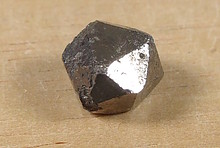Home PageAbout MindatThe Mindat ManualHistory of MindatCopyright StatusWho We AreContact UsAdvertise on Mindat
Donate to MindatCorporate SponsorshipSponsor a PageSponsored PagesMindat AdvertisersAdvertise on Mindat
Learning CenterWhat is a mineral?The most common minerals on earthInformation for EducatorsMindat ArticlesThe ElementsThe Rock H. Currier Digital LibraryGeologic Time
Minerals by PropertiesMinerals by ChemistryAdvanced Locality SearchRandom MineralRandom LocalitySearch by minIDLocalities Near MeSearch ArticlesSearch GlossaryMore Search Options
The Mindat ManualAdd a New PhotoRate PhotosLocality Edit ReportCoordinate Completion ReportAdd Glossary Item
Mining CompaniesStatisticsUsersMineral MuseumsClubs & OrganizationsMineral Shows & EventsThe Mindat DirectoryDevice SettingsThe Mineral Quiz
Photo SearchPhoto GalleriesSearch by ColorNew Photos TodayNew Photos YesterdayMembers' Photo GalleriesPast Photo of the Day GalleryPhotography
╳Discussions
💬 Home🔎 Search📅 LatestGroups
EducationOpen discussion area.Fakes & FraudsOpen discussion area.Field CollectingOpen discussion area.FossilsOpen discussion area.Gems and GemologyOpen discussion area.GeneralOpen discussion area.How to ContributeOpen discussion area.Identity HelpOpen discussion area.Improving Mindat.orgOpen discussion area.LocalitiesOpen discussion area.Lost and Stolen SpecimensOpen discussion area.MarketplaceOpen discussion area.MeteoritesOpen discussion area.Mindat ProductsOpen discussion area.Mineral ExchangesOpen discussion area.Mineral PhotographyOpen discussion area.Mineral ShowsOpen discussion area.Mineralogical ClassificationOpen discussion area.Mineralogy CourseOpen discussion area.MineralsOpen discussion area.Minerals and MuseumsOpen discussion area.PhotosOpen discussion area.Techniques for CollectorsOpen discussion area.The Rock H. Currier Digital LibraryOpen discussion area.UV MineralsOpen discussion area.Recent Images in Discussions
Techniques for CollectorsPLEASE HELP!! My telluride is black!!

19th Apr 2016 22:16 UTCAurum Williamson
I think I screwed up bad. I have a specimen of sylvanite on quartz crystals and matrix. The specimen had an iron oxide coating on everything dulling the specimen. I got a wise idea that using some oxalic acid to remove the iron staining was the way to go. Well within a few minutes the whole specimen turned black. I've never seen this. I could see a chemical reaction with the sylvanite happening, but the quartz and matrix also turned black. This is odd. Do you thing the specimen had been coated with something and the oxalic acid reacted with it? I really need to clean this specimen. I don’t want to concede to my stupidity.
Thanks for your help,
Keith

19th Apr 2016 22:44 UTCBob Harman
So as an addendum, I did some further reading and tellurium can form compounds with silver and gold. The minerals formed include sylvanite (mentioned by the poster) and the related mineral calaverite. I knew that, but these may correctly be called silver gold tellurides so I guess you might actually say that "your telluride is black". In any case I see where reactions with reducing agents and acids can create other compounds and complex tellurium organic gases as byproducts. Anyway, learn something new everyday! CHEERS.....BOB
20th Apr 2016 00:00 UTCPavel Kartashov Manager

20th Apr 2016 07:20 UTCReinhardt van Vuuren
Keith don't feel bad I am sure everyone that has worked with acid has at some time or another destroyed a specimen in the process, its what you learn from it that is important. I once ruined a palm sized azurite possibly from Tumeb with vinigar, this was one of the first things I've ever treated with acid, lessons were learned, then I moved up in the world and cleaned a prehnite with HCI only to discover that this thing was 50% calcite and the prehnite is crumbly with a big air pocked between it and the base/matrix, then I moved up in the world wanted to use HF hydorflouric acid to clean another prehnite but couldn't find any locally so I found glass etching paste at the local craft shop well it cleaned it nicely but it mats everything it touches so I ended up with a mat prehnite, some olive oil got rubbed into that piece, still smells funny. So you are not alone my friend. (tu)

20th Apr 2016 07:34 UTCAlfredo Petrov Manager

20th Apr 2016 10:58 UTCReinhardt van Vuuren
20th Apr 2016 13:05 UTCPavel Kartashov Manager
Search EDTA on eBay. In Russia this reagent known as "Трилон-Б".
Note that EDTA dissolves carbonates - for example dolomite is soluble in it better than in concentrated HCl.
In difference from oxalic acid EDTA don't leave after it insoluble products of reaction similar to Fe[C2O4]*2H2O.
Probably it will be able to clean up your specimen. At least quartz of it.




Mindat.org is an outreach project of the Hudson Institute of Mineralogy, a 501(c)(3) not-for-profit organization.
Copyright © mindat.org and the Hudson Institute of Mineralogy 1993-2024, except where stated. Most political location boundaries are © OpenStreetMap contributors. Mindat.org relies on the contributions of thousands of members and supporters. Founded in 2000 by Jolyon Ralph.
Privacy Policy - Terms & Conditions - Contact Us / DMCA issues - Report a bug/vulnerability Current server date and time: April 26, 2024 22:31:31
Copyright © mindat.org and the Hudson Institute of Mineralogy 1993-2024, except where stated. Most political location boundaries are © OpenStreetMap contributors. Mindat.org relies on the contributions of thousands of members and supporters. Founded in 2000 by Jolyon Ralph.
Privacy Policy - Terms & Conditions - Contact Us / DMCA issues - Report a bug/vulnerability Current server date and time: April 26, 2024 22:31:31











